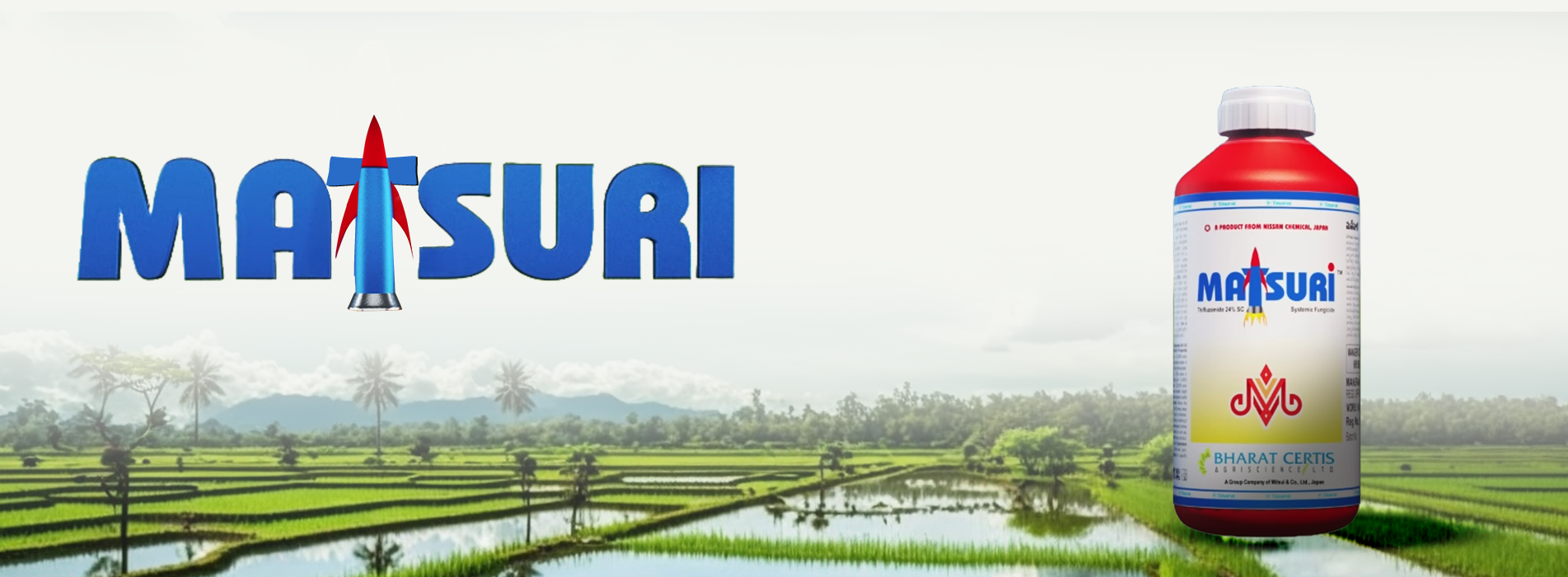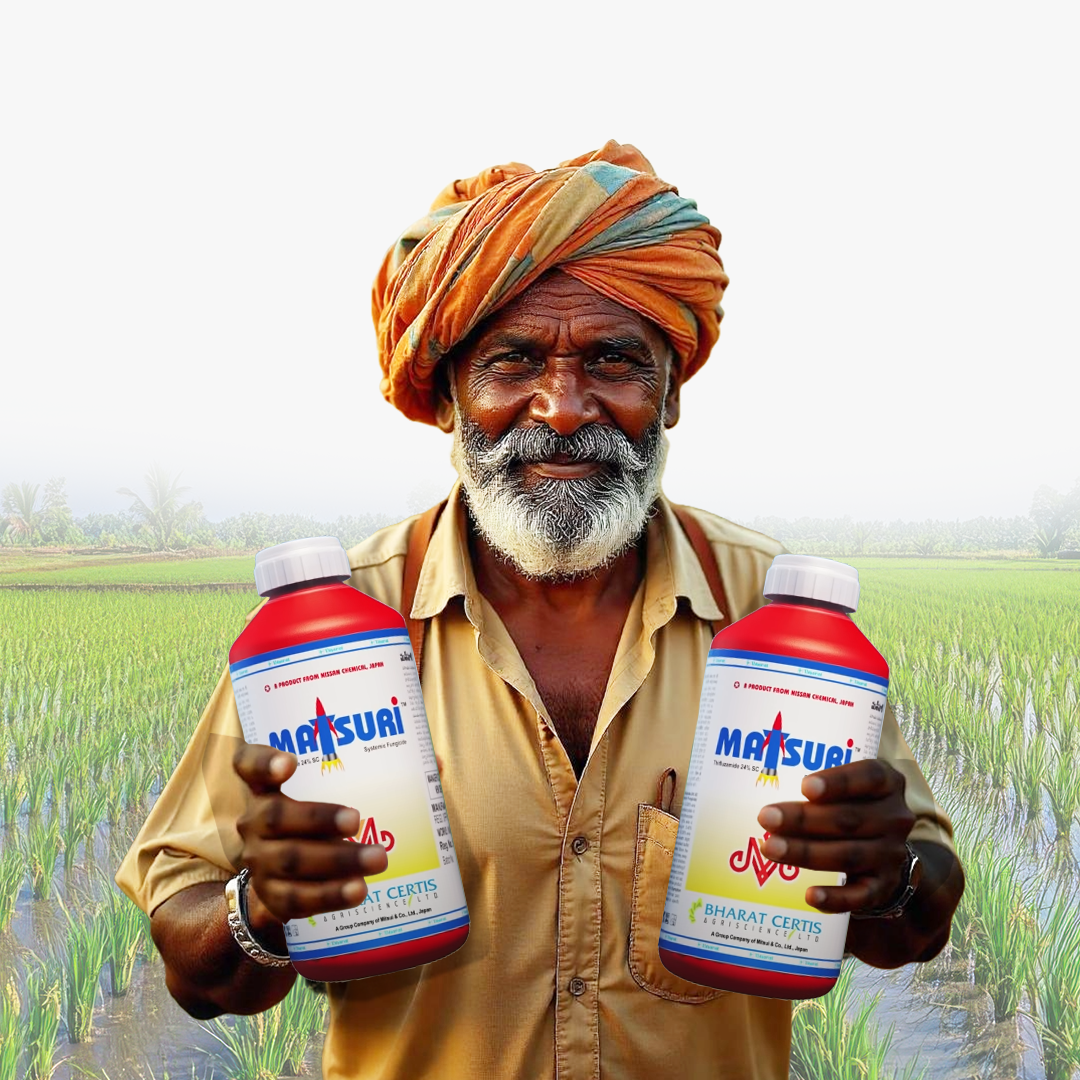
Matsuri Solution for Sheath Blight in Rice
26th March 2025
Rice and the Threat of Sheath Blight
Rice is not just a staple food but also a crucial part of India's agricultural economy. However, rice farmers constantly battle various diseases, and one of the most persistent threats is sheath blight. This fungal disease can cause severe yield losses (up to 50% yield loss) if left untreated, making it essential for farmers to stay ahead with the right preventive and control measures.
Sheath blight of rice is caused by the soil-borne fungus Rhizoctonia solani. The disease starts from the maximum tillering to heading stage. Initial symptoms appear on leaf sheaths near the water level. On the leaf sheath, oval, elliptical, or irregular greenish-grey spots are formed. As the spots enlarge, the center becomes greyish-white with an irregular blackish-brown border. The lesion extends rapidly and covers entire tillers from the water line to the flag leaf.

Factors That Promote Sheath Blight
The most conducive environment for this disease is warm, humid conditions, making rice fields an easy target.
Prevention and Management
• Field Sanitation – Removing infected crop residues can prevent the fungus from overwintering.
• Water Management – Proper drainage helps control excessive moisture, limiting fungal growth.
• Precise Fertilization – Overuse of nitrogen fertilizers makes plants more susceptible, so balanced fertilization is key.
The Power of Modern Fungicides
Despite best efforts, sheath blight can still make an appearance. That's where the best fungicide for rice sheath blight comes in—advanced solutions like Matsuri offer targeted protection, stopping fungal spread and safeguarding rice yields.
How Matsuri Ensures a Healthier Harvest
Applying Matsuri at the right time ensures healthier crops and better productivity.
A Resilient Future for Rice Farmers
With increasing climate unpredictability, farmers must be proactive in managing blight disease in paddy. By combining good agricultural practices with scientifically developed fungicides, they can strengthen their crops against rice sheath blight and secure a profitable harvest season.
Recommended Dose
150 ml per acre